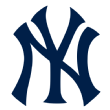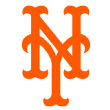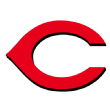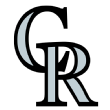Best NBA rookies: Top shooter, passer, 19-year-old and more
This NBA season hasn't been a banner year for rookies but some first-year players are standing out, led by 2014 No. 3 overall pick Joel Embiid.
Which rookies have provided the most instant offense, the most energy and the best playmaking? Let's take a look at the best rookies in a few important categories.
Best Interior Defender: Joel Embiid | Philadelphia 76ers
Embiid's NBA debut after a two-year absence due to a fractured navicular bone in his right foot, which required multiple surgeries, has saved us from the most uninspiring Rookie of the Year race in recent memory.
With his playing time limited in deference to health, Embiid has packed remarkable production into 25 minutes per game. Per 36 minutes, he's averaging 27.8 points, 10.8 rebounds and 3.3 blocks. Of all the rookies in NBA history, only another Philadelphia center, Wilt Chamberlain, scored more prolifically per minute, according to Basketball-Reference.com.
Perhaps more impressive than Embiid's volume is that he has managed to score with above-average efficiency (.572 true shooting percentage) while finishing a remarkable 36.1 percent of the 76ers' plays with a shot, trip to the free throw line or turnover. Before Embiid, Ben Gordon (31.9 percent) and Cedric Ceballos (31.3 percent in 11.6 minutes per game) were the lone rookies with a usage rate north of 30 percent. Neither reached league average in true shooting percentage.
Beyond Embiid's offensive contributions, he also has the top defensive rating in ESPN's real plus-minus (plus-1.4 RPM per 100 possessions) among rookies. With Embiid on the court, Philadelphia has allowed just 101.1 points per 100 possessions, which would lead the league, according to NBA.com/Stats.
Best Shooter: Buddy Hield | New Orleans Pelicans
Hield has shaken off a poor start -- he shot 23.6 percent from 3-point range in October and November -- to deliver the kind of perimeter punch we expected from the high-scoring former Oklahoma star. Since Dec. 1, Hield is making half of his 3-point attempts and ranks ninth in the league with 47 makes.
The rest of Hield's game has been slower to come around. Per NBA.com/Stats, the Pelicans have still been 2.7 points per 100 possessions better with Hield on the bench during his hot-shooting streak, explaining why he still ranks in the league's bottom five in RPM. But those faults would be a lot harder to overlook if Hield also wasn't making shots.
Best Passer/Perimeter Defender: Malcolm Brogdon | Milwaukee Bucks
Since Brogdon wins two categories, it's no surprise that he's been the most productive player from this year's draft class. (He's the one 2016 draftee to exceed 0.5 WARP thus far; Embiid was drafted in 2014.)
The second-round pick out of Virginia replaced Matthew Dellavedova as Milwaukee's starting point guard when Dellavedova was injured in late December and has yet to relinquish the job.
Why has Brogdon exceeded expectations? First, he's shown the ability to share ballhandling duties with point forward Giannis Antetokounmpo, averaging 5.8 assists per 36 minutes -- tops among rookies and far better than the 3.3 per 36 minutes he averaged as a college senior.
Second, Brogdon has made 42.4 percent of his 3-pointers after shooting 36.5 percent at Virginia (which did improve to 39.1 percent as a senior). Odds are Brogdon's 3-point percentage will regress to the mean, but he's shown enough other skills to remain a useful contributor.
What isn't surprising is the way Brogdon, last season's ACC Defensive Player of the Year, has quickly thrived at that end of the floor. At 6-foot-5, Brogdon has enough size to defend either guard position, and his length (his wingspan was measured at 6-foot-10½ at the draft combine) fits perfectly into the Bucks' defensive philosophy.
Best 19-year-old: Jamal Murray | Denver Nuggets
The NBA is a harsh place for teenagers, as the performance of the nine rookies who have yet to celebrate their 20th birthday has shown. While No. 2 overall pick Brandon Ingram and Phoenix Suns starter Marquese Chriss have gotten more playing time, Murray has been better on a per-minute basis.
The Canadian guard has been more efficient than his 37.3 percent shooting would suggest by virtue of taking more than half his shots from 3-point range. Murray's ability to create his own shot -- he has made more unassisted 2-pointers than assisted ones, per Basketball-Reference.com -- is also an encouraging sign for his future. The Nuggets don't yet need big minutes from Murray, but he might ultimately prove to be their best young guard.
Best Stretch-4: Davis Bertans | San Antonio Spurs
With apologies to Domantas Sabonis (shooting a surprising 37.5 percent from 3-point range as a starter) and Dario Saric (who's playing plenty of small forward), Bertans gets the nod.
The 2011 second-round pick, who came to the NBA this season, is known as "Lat Bonner" in honor of his Latvian heritage and Spurs predecessor Matt Bonner.
Bertans, 24, has a quicker release than Bonner and has proved to be equally accurate from long distance in a small sample, making 40.7 percent of his 59 3-point attempts. As Jonathan Tjarks detailed on the Ringer earlier this week, Bertans' ability to drive to attack hard closeouts and find teammates might be his most impressive skill. Bertans is averaging 2.1 assists per 36 minutes, more than Bonner ever did.
Best Energizers: Mindaugas Kuzminskas and Willy Hernangomez | New York Knicks
The Knicks have another candidate for this honor, undrafted point guard Ron Baker, which might suggest a certain lack of energy from their starting five, but it is also testament to the kind of players they found to fill out their bench on the cheap this summer.
When Hernangomez (a 2015 second-round pick who came to the NBA this season) and Kuzminskas (a European veteran) have teamed up this season, New York has outscored opponents by 5.0 points per 100 possessions, according to NBA.com/Stats -- not bad for a team that typically sports a negative net rating.
The frontcourt combination has spurred multiple comebacks this season.
Best Instant Offense: Kay Felder | Cleveland Cavaliers
Nobody has to tell Felder, the lowest-drafted player from the 2016 draft to make an NBA roster, to shoot. Despite joining the defending champions, Felder has used 23.3 percent of his team's plays, which ranks third among rookies with at least 200 minutes behind Embiid and Jonathan Gibson (since released).
Felder's shoot-first approach has led to some ugly outings, like missing all six of his attempts in garbage time against Portland earlier this week. But during the six games in which he has played at least 15 minutes, Felder has averaged 21.6 points per 36 minutes on 51.0 percent effective shooting.

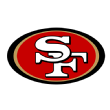
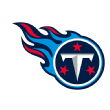
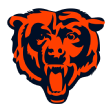

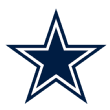




 @Skooby for holding us down
@Skooby for holding us down

